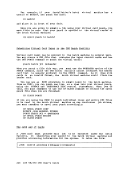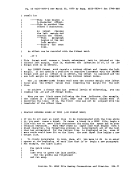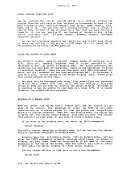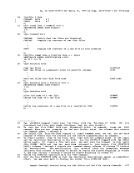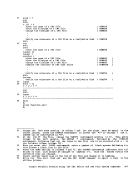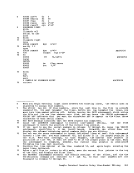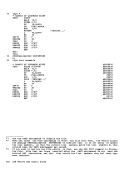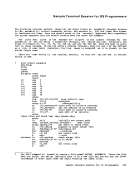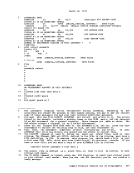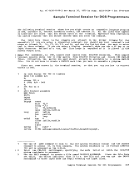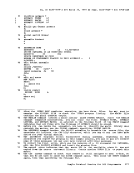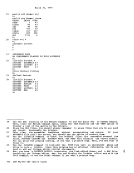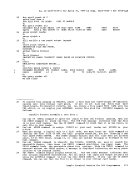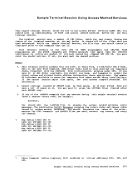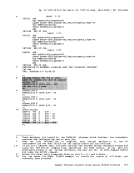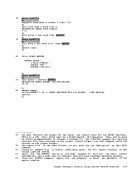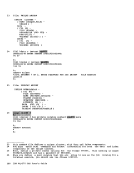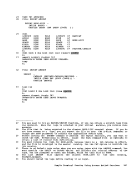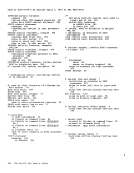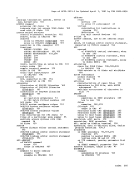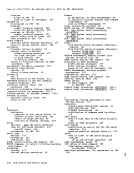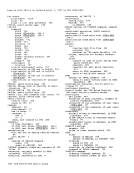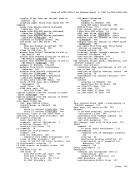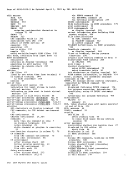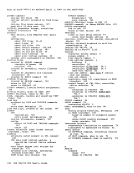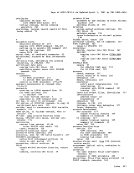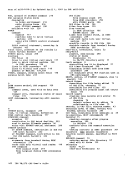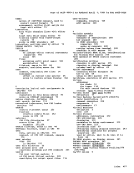stack execute before a read request is presented to the terminal. When you enter mUltiple equal signs, the subcommand is stacked once for each
equal sign you enter.You can also stack an additional EDIT subcommand following an equal
sign. The subcommand line is also stacked, but it is stackedLIFO (last-in, first-out) so that it executes before the stacked subcommand.
For example, if you enter:
delete
= next
a DELETE subcommand is executed, then a DELETE subcommand is stacked,
and aNEXT subcommand is stacked in front of it. Then the stacked lines
are read in and executed. The above sequence has the same effect as if
you enter:
delete
next
delete
In addition to stacking the last
find out what it was, using the?
enter:
subcommand executed, you can also
subcommand. For example, if you
next10 ?
the editor displays:NEXT 10 Since the subcommand line NEXT 10 you enter an = subcommand, it is
subcommand.
was the last subcommand entered, if
executed again.You cannot stack a ? !Qte: The ? subcommand,
subcommand into the user
re-entering it.
on a display terminal,
input area, where you
copies the
may modify
last EDIT
it beforeWHAT TO DO WHEN YOU RUN OUT OF SPACE There are two situations that may prevent you from continuing an edit
session or from writing a file onto disk.You should be aware of these
situations, know how to avoid them, and how to recover from them, should
they occur.When you issue the EDIT command to edit a file, the editor copies the
file into virtual storage. If it is a large file, or you have made many
additions to it, the editor may run out of storage space. If it does, it
issues the message:
AVAILABLESTORAGE IS NOW FULL When this happens, you cannot make any
unless you first delete some lines. If
editor issues the message:NO ROOM changes or additions to the file
you attempt to add a line, the
If you were entering data in input mode, your virtual machine is
returned to edit mode, and you may receive the message:
88IBM VM/370 CMS User's Guide
equal sign you enter.
sign. The subcommand line is also stacked, but it is stacked
For example, if you enter:
delete
= next
a DELETE subcommand is executed, then a DELETE subcommand is stacked,
and a
are read in and executed. The above sequence has the same effect as if
you enter:
delete
next
delete
In addition to stacking the last
find out what it was, using the?
enter:
subcommand executed, you can also
subcommand. For example, if you
next
the editor displays:
subcommand.
was the last subcommand entered, if
executed again.
subcommand into the user
re-entering it.
on a display terminal,
input area, where you
copies the
may modify
last EDIT
it before
session or from writing a file onto disk.
situations, know how to avoid them, and how to recover from them, should
they occur.
file into virtual storage. If it is a large file, or you have made many
additions to it, the editor may run out of storage space. If it does, it
issues the message:
AVAILABLE
unless you first delete some lines. If
editor issues the message:
you attempt to add a line, the
If you were entering data in input mode, your virtual machine is
returned to edit mode, and you may receive the message:
88

































































































































































































































































































